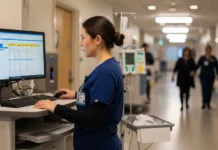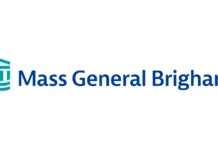EGS has developed a proprietary NOS platform technology, widely recognized as the next step in the evolution of minimally invasive surgery. StomaphyX® and EsophyX®, EGS’ first two NOS surgical devices, are designed specially for performing incisionless reconstructive gastrointestinal procedures. The devices are introduced into the body transorally (through the mouth), rather than through an abdominal incision, to access the GI tract so that no incisions are needed. The advantages of incisionless surgery over laparoscopic or open surgery include shorter hospital stay, reduced patient discomfort, shortened patient recovery, no visible scars, and typically higher patient satisfaction. Incisionless surgery also eliminates the risk of incisional infection and incisional herniation, as well as reduces and possibly eliminates the risk of nosocomial infections.
More than 95% of all NOS procedures of the GI tract being performed today are performed using EGS devices, illustrating how EGS is driving adoption of what is widely regarded as the future of surgery. Millions of patients worldwide can benefit from these incisionless surgical procedures and we anticipate continued dramatic growth over the next few years,” he added.
Esophyx
Most GERD patients manage their disease with medications such as H2 blockers and proton pump inhibitors. Pharmacological therapy reduces acid, treating the heartburn symptoms, but does not treat the underlying anatomical root cause of reflux and does not prevent disease progression. Patients on pharmacological therapies often face a lifetime of taking pills, with increasing dosage as the pills lose their effectiveness and the disease progresses.
Reflux is a progressive deterioration of the antireflux barrier anatomy and requires an anatomical solution to resolve it. The EsophyX procedure, called TIF (Transoral Incisionless Fundoplication) is based upon long-standing surgical principles proven effective in treating severe GERD. TIF reconstructs the antireflux barrier and restores the antireflux valve at the gastroesophageal junction to what is believed to be its natural anatomical geometry, without incisions.
EsophyX TIF is the next step in the evolution of surgical procedures for treating GERD, from open to laparoscopic to now incisionless, and builds upon established surgical principles. The TIF procedure delivers benefits similar to time-proven laparoscopic antireflux procedures, by reducing hiatal hernia, elongating the esophagus, recreating the Angle of His, and creating a fully-functional Gastroesophageal Valve (GEV). The key differences are that EsophyX TIF is a transoral, non-invasive procedure requiring no incisions and does not dissect any part of the internal anatomy.
The EsophyX device is designed to deploy multiple tissue fasteners to create a robust and durable antireflux barrier (ARB) valve. Histological samples of preclinical studies confirmed that the EsophyX TIF procedure creates a valve that incorporates serosa-to-serosa fusion. In addition, it could be demonstrated that the phrenoesophageal ligament is incorporated into the valve, stabilizing and strengthening it and firmly anchoring it to the diaphragm. EsophyX TIF is a very physiological approach to restoring the natural anatomical configuration of the ARB of the Gastroesophageal Junction (GEJ). In many cases, EsophyX TIF is an alternative to surgical or pharmaceutical approaches to treating GERD. Because it is effective and less invasive compared with conventional laparoscopic or open surgical procedures for treating GERD, it significantly expands the population of GERD patients willing to undergo anatomical repair.
Recent clinical studies show that the EsophyX TIF procedure has significantly improved patients’ quality of life, allowing them to return to living a normal live. More than 79% are now off daily PPIs at two years and no longer have to worry about the long-term complications and side affects associated with drug management. Patients can eat the foods they want when they want and sleep without fear of heartburn. As important, the EsophyX TIF procedure significantly lowers the hurdle for surgery and is becoming the frontline surgical approach to managing GERD.
StomaphyX
Similar to EsophyX, StomaphyX is another breakthrough NOS surgical device for use in transoral tissue approximation and ligation in the GI tract for treating GI conditions.
A sterile, single-use device, StomaphyX can be used to create large, durable full-thickness tissue folds in the GI tract. Stomaphyx is placed through the mouth into the stomach under direct endoscopic guidance. The wall of the stomach is then suctioned into the device and a specially-engineered, non-resorbable polypropylene H-shaped fastener is then deployed across the fold of tissue. This creates a plication that over a few weeks following surgery will be stabilized by strong serosa to serosa tissue fusion. An unlimited number of plications can be created with only a single insertion of the device, thus minimizing trauma. Usually between 15 and 20 fasteners are placed during the procedure, which typically takes 20-30 minutes. Most patients can return to work the following day. Natural Orifice Surgery provides a very-low risk option for these patients.

















